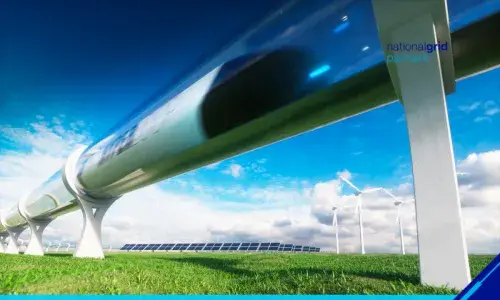
The surprising 'missing link' in solar capitalization
Humankind faces the colossal challenge of decarbonizing. It’s no exaggeration to say that the well-being of our future generations depends on us successfully meeting this challenge.
Solar will clearly be a key element to this decarbonizing effort. The sun is essentially a massive fusion reactor in the sky that provides enough energy to power our planet with clean, renewable energy many times over. And the cost of this energy is continuously being driven down by incremental improvements in photovoltaic technology and economies of scale.
But financing remains a sticking point for the solar market. Deployment of solar panels requires capital—and capital demands returns that are competitive with alternative allocations in regards to risk and reward. So while the technical price/performance economics of solar keep improving over time, the ability of solar to attract essential capital remains inadequate.
That’s where National Grid Partners has spotted a compelling investment opportunity.
Solar securitization pros and cons
One effective way to attract capital to solar is securitization. Securitization bundles large pools of productive solar capacity and then sells shares in those pools of capacity to investors. This securitization enables investors to flexibly allocate capital to solar capacity based on their own portfolio objectives—rather than tying them to specific solar infrastructure sites—while providing them with essential liquidity.
The market for these solar asset-based securities has now surpassed $1 billion. And it continues to grow as a handful of market makers become increasingly adept at structuring and selling these securities to pension funds and other institutional investors.
Perhaps more importantly, securitized solar assets make it much easier for original investors in solar installations to attract low-cost capital, since they can now quickly recoup their investments in a growing secondary solar securities market—rather than having to wait years for their investments to pay off in sold power.
As with any security, however, investors must factor risk as well as return into their decisions regarding solar.
One particularly problematic risk is the potential failure of solar assets to perform as promised. A solar-based security is essentially a contract to deliver some expected amount of energy over some projected period of time. If an asset fails to produce because it isn’t properly maintained and managed, the investor is left holding the bag in the form of an under-performing asset. Such risks can dull the appetite of institutional investors for solar securities.
Enter Omnidian
To insulate themselves against such risk, investors need someone to step in as a guarantor of solar asset performance. And that’s what the innovators at Omnidian deliver.
Omnidian provides complete turnkey assurance of solar asset performance. They monitor solar infrastructure on a 24x7x365 basis, coordinate service calls, and cover all required repairs.
Most importantly, Omnidian can guarantee at least 90% performance for covered systems—or they make up the difference.
This combination of turnkey service-at-scale and a performance guarantee is obviously very appealing to investment managers. It insulates investors from one of their most concerning downside risks, while providing fixed operational cost across the disparate bundled assets upon which their solar securities are based. Plus, because its coverages are transferable, Omnidian facilitates the liquidity of the solar asset-based securities market as well.
In other words, by offering the right services to the right customers for the right price, Omnidian has become a key catalyst for the market capitalization of solar—and, by extension, for fulfillment of the broader global mission of decarbonization.
That’s why National Grid Partners is investing in Omnidian and working closely with them to facilitate the continued development of their business.
Technological novelty vs. market catalysis
National Grid Partners’ investment in Omnidian highlights several aspects of our broader strategy:
- We believe that optimal venture engagement isn’t primarily about technological novelty. It’s about understanding markets and their unmet needs. Innovation for its own sake can attract a lot of attention—but without a clear connection to market and capital flows, innovation has limited value.
- We’re not just financiers. So we offer innovators more than money. Our IP, our global ecosystem of business relationships, and our engineering culture are significant value-adds for the companies we choose to partner with.
- We’re not narrowly focused on short-term ROI. Of course, we perform due diligence to ensure that our investments generate attractive financial returns for our stakeholders. But we also keep the Big Picture in mind.
Decarbonization is part of that Big Picture. And we seek to leverage our financial resources, our market presence, and our unique IP to realize the benefits of the Big Picture view at every compelling opportunity—for our investors, our customers, our communities, and our planet.
Dillon McDonald is Vice President of Incubation at National Grid Partners.


